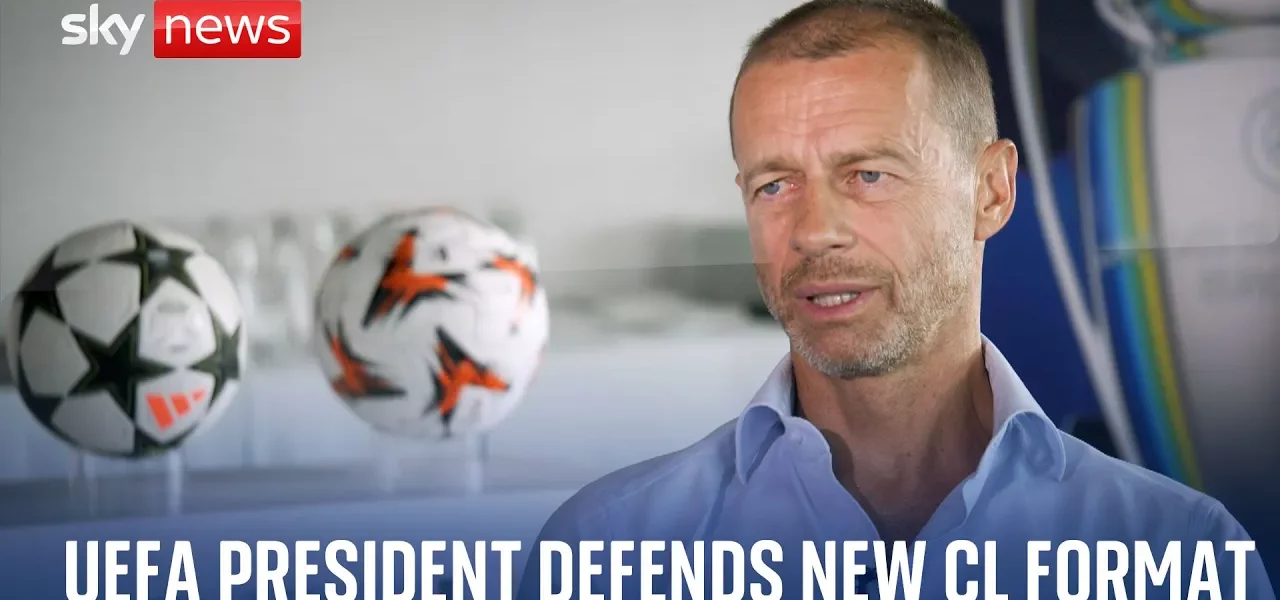Changes in European Football: A New Era for Competition

This article delves into the recent discussions surrounding European football competitions, exploring the implications for clubs, players, and the overall structure of the game. With insights from stakeholders and analysis of the current football landscape, we will uncover how these changes aim to create a more unpredictable and exciting competition.
Introduction
The landscape of European football is undergoing significant transformation as discussions among stakeholders—including leagues, clubs, and fans—have led to proposed changes aimed at fostering a more engaging and unpredictable competition. These developments come at a time when the threat of the Super League loomed large, prompting an urgent need for reform. This article will explore the breadth of these changes, their implications for various parties involved, and the future of football in Europe.
The Shift in Competition Structure
In recent discussions, a consensus emerged among stakeholders about restructuring European football competitions. The intent is to ensure participation from a wider array of clubs, thereby enhancing competitiveness and excitement.
Benefits of the New Structure
- Increased opportunities for national teams to compete.
- More unpredictability in match outcomes, making games more engaging.
- Financial solidarity measures to support non-participating clubs.
These changes aim not only to address concerns about financial imbalances but also to revitalize the competitive spirit across leagues.
Concerns About Player Workload
One major concern arising from these changes is the potential for increased player burnout due to a packed schedule. Stakeholders are aware that the current calendar is already full, prompting discussions about player health and performance.
- Current match load: Players are already facing a demanding schedule.
- Health implications: Increased matches may lead to a higher risk of injuries.
- Club responses: Many clubs express financial strain and concerns about player welfare.
Balancing the financial needs of clubs with the health of players is crucial as these discussions unfold.
Financial Dynamics in European Football
As clubs navigate the financial landscape, the disparities in wealth—especially between Premier League teams and other European clubs—have come to the forefront. This economic imbalance has prompted clubs to seek additional revenue streams.
Financial Fair Play Adjustments
In response to the evolving situation, financial fair play regulations have been revisited to provide clubs with more leeway, particularly following the disruptions caused by the COVID-19 pandemic.
- Relaxation of strict financial rules to accommodate post-pandemic recovery.
- Implementation of a testing phase to evaluate club compliance.
These adjustments reflect an understanding that the financial ecosystem of football is complex and requires careful management.
Revenue Generation Strategies
Clubs are actively exploring new revenue avenues, and there is hope that increased sponsorship deals and broadcasting rights can alleviate financial burdens.
- Expanding partnerships with sponsors to boost revenue.
- Negotiating lucrative broadcasting deals to ensure financial sustainability.
The goal is to ensure a fair distribution of wealth among clubs while maintaining competitive integrity.
The Future of European Football
The future of European football is a topic of great debate, especially in the context of maintaining the integrity of competitions amidst external pressures like the Super League and international investments.
Maintaining European Identity
There is a strong sentiment among stakeholders to preserve the Champions League as a distinctly European competition, resisting external offers to host events outside of Europe.
Emerging Challenges
While optimism exists regarding the future, challenges such as geopolitical tensions and financial disparities continue to affect the landscape.
- Political interference in football operations.
- Competition from emerging leagues and financial markets.
Addressing these challenges will be vital for the long-term health of European football.
Conclusion
In summary, the recent changes in European football competitions represent a significant shift aimed at fostering greater competitiveness and financial balance. While concerns about player workload and financial disparities remain, the collaborative efforts among stakeholders are promising. As football fans, we can remain hopeful for a future that prioritizes not only financial viability but also the integrity and excitement of the game we love. For more insights into European football, explore our related articles.
“`




